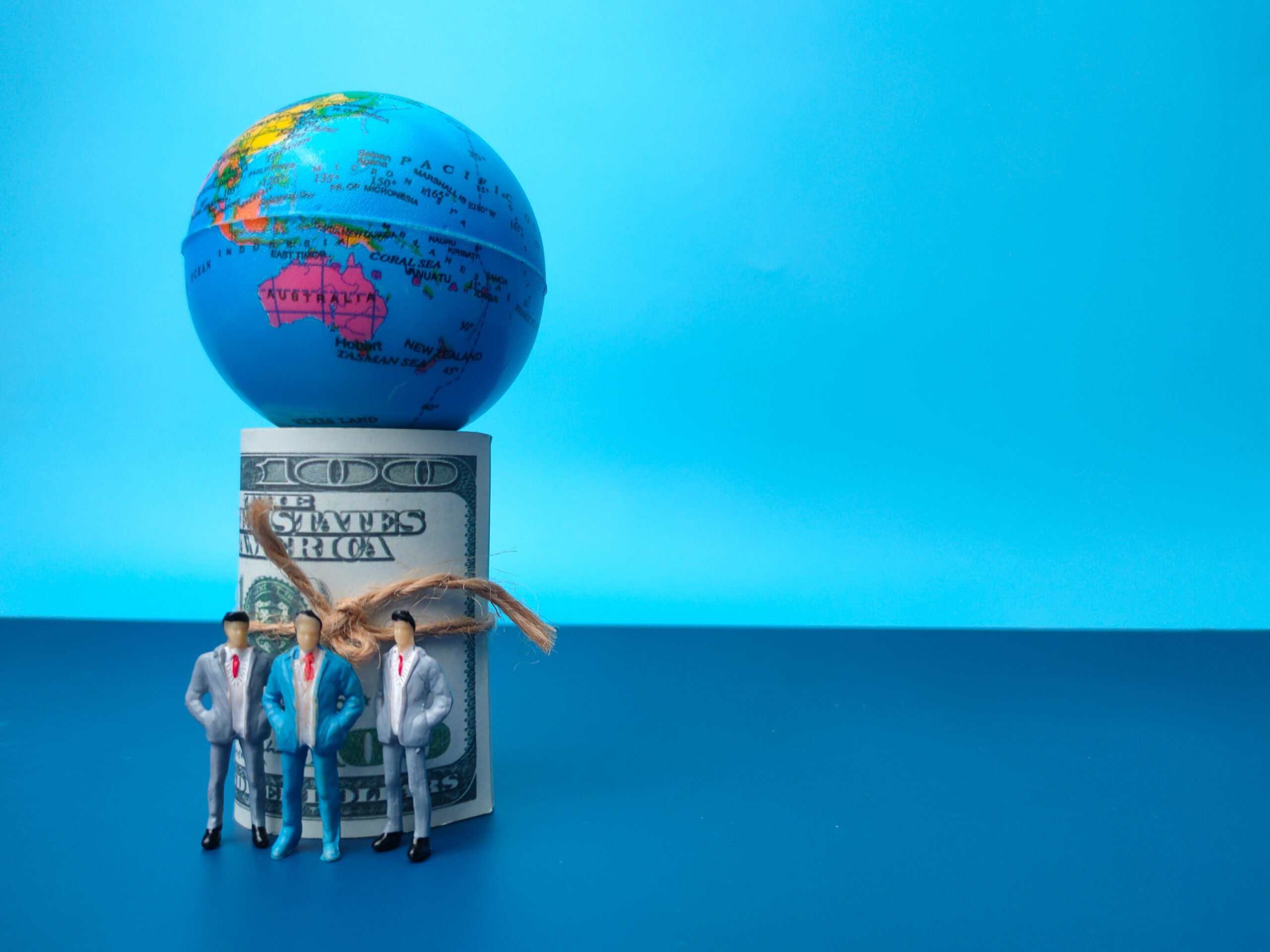Many of us know the owner or operator of a small or medium-sized business.
Let’s imagine they decide to meet with their bank. They take out a loan to finance some new equipment. Their shop front also needs repairs. They also borrow a little more than they currently need to cover any unforeseen circumstances.
They could not have known the timing of their new debt was poor. Interest rates rise, and customers must pay more to service their mortgages and credit card bills, leaving them less to spend. In a double hit to their finances, this also means the cost of servicing their loan increases.
The business finds itself spending more and more on interest payments. This leaves less money in the bank account for investing in new projects or maintaining current operations.
Time passes. Debt accumulates. Interest costs rise further.
The temptation is to take out a further loan to stay afloat and pay for daily operations. But without a clear repayment plan, this course of action risks sinking the entire business under the weight of its obligations to its lenders.
Now, let’s extend this easy-to-understand scenario to a whole country.
National debt functions much like a business loan but on a much larger scale. When a country accumulates high debt levels, it can initially use the funds to stimulate economic growth, fund infrastructure, or support public services. However, over time, high debt levels can have serious consequences.
Nations may face increased interest rates and higher inflation. That leaves less money in the Treasury for funding for critical services. If a government needs to spend more on debt servicing (interest payments), it might cut back on essential services like healthcare or education. Small businesses and individuals could see rising taxes.
Understanding these dynamics is crucial for grasping the broader implications of national debt on the economy and everyday life. In this blog, we’ll explore a framework for understanding how high national debt in an era of globalization can shape a country’s economic landscape, influence its financial stability, and affect its social and political environment.
Table of Contents:
Long-Term Economic Consequences
Impact on Currency Value and Inflation
Risks of Sovereign Debt Crisis
Social and Political Consequences
Understanding National Debt
At its most straightforward, national debt is the total money a government owes its creditors.
It can be divided into two main components: public and external debt. Public debt refers to the money borrowed from domestic sources, including individuals, institutions, and even the central bank. External debt, on the other hand, is the portion of national debt owed to foreign creditors, such as other governments, international organizations, or foreign investors. In an era marked by high levels of globalization, much more debt is held by foreign creditors than in decades past.
The debt-to-GDP ratio is a key metric used to assess the size of a country’s national debt. This ratio provides insight into the economy’s ability to service and repay its debt. A higher debt-to-GDP ratio indicates that a country has a large debt relative to its economic output. A lower ratio suggests that the debt is more manageable relative to what its economy can produce.
Short-Term Economic Impact
If accumulating public debt did not have benefits, politicians would not be so enthusiastic about getting a ‘national credit card’!
One key benefit of national debt is its ability to stimulate economic growth. When a government borrows money, it often spends it on infrastructure projects, social programs, or other public services that boost economic activity. The US Inflation Reduction Act is one recent, well-known example.
Investments in infrastructure, transportation, healthcare, and education can create jobs and provide long-term economic benefits. National debt also allows governments to fund essential services and projects that may not be immediately feasible through tax revenues alone. Borrowing can help a country invest in critical infrastructure, such as roads, energy systems, and digital networks. This can be particularly important during times of crisis, such as natural disasters or pandemics, when swift government action is needed to stabilize the economy.
However, the duality of all financial instruments means that with every potential reward, there is an associated potential risk. The core of the risk/reward tradeoff underpins every financial instrument and capital allocation decision.
One primary concern we have all felt has been the effects of inflationary pressures in recent years. When governments borrow and spend large amounts of money, it can lead to an increase in the money supply, which may cause inflation. Rising inflation erodes the purchasing power of consumers and businesses, reducing their ability to buy goods and services. High inflation can also hurt low-income households the most, as their incomes tend to rise more slowly than the prices of essential goods.
Higher interest rates are another risk. As a government takes on more debt, creditors may demand higher interest rates to compensate for the risk of lending to a heavily indebted country. Higher interest rates not only increase the government’s borrowing costs but can also lead to increased borrowing costs for businesses and households.
Long-Term Economic Consequences
Those of us interested in macroeconomics are often preoccupied with the long term. So, it makes sense to consider the long-term upsides and downsides of higher national debt.
The most serious is the drain on the public finances of a nation. As national debt grows, so do debt servicing costs. These are the interest payments required to maintain the debt. Over time, these interest payments can consume a large portion of the government budget. This reduces the funds available for essential public services such as healthcare, education, and infrastructure. For instance, in the U.S., interest payments on the national debt exceeded $475 billion in 2022, surpassing federal spending on key programs like veterans’ benefits.
When more of the government’s budget is dedicated to servicing debt, essential programs, such as social welfare, infrastructure development, and education, may face cutbacks. This can lead to deteriorating public infrastructure, reduced healthcare quality, and decreased support for vulnerable populations.
Governments may increase taxes to offset the growing debt burden. This tax burden can disproportionately affect the middle class and small businesses, further widening inequality and slowing economic growth.
Another less obvious long-term consequence of high national debt is the crowding out of private investment. When a government borrows heavily, it competes with private sector entities for available capital in financial markets. This can lead to reduced access to credit and higher borrowing costs for businesses. The impact on business growth and innovation can be significant. Private companies may struggle to invest in research and development or expansion with less capital available. Globalization means that capital can flow more easily to where it believes it can generate the highest return, which means capital outflows for the indebted nation. Over time, this lack of access to capital can slow down innovation and economic productivity.
Impact on Currency Value and Inflation
The national debt can seem like an obscure concept with limited impact on a nation’s citizens’ daily finances and activities. This isn’t the case. High national debt can significantly influence a country’s currency value and inflation rates, directly affecting the broader economy and citizens’ purchasing power.
When a country accumulates a large amount of debt, especially external debt (owed to foreign creditors), it can lead to currency depreciation.
As national debt rises, investors may grow concerned about the country’s ability to repay its obligations. They may start selling off that country’s currency or move investments to safer markets if they fear potential default or unsustainable borrowing levels. This sell-off can increase the supply of the country’s currency on the global market, driving down its value relative to other currencies.
In extreme cases, governments may print more money to pay off their debt, temporarily alleviating debt pressures. However, increasing the money supply can reduce the currency’s value, which means a weaker exchange rate against other currencies.
Currency depreciation can have profound economic implications. While a weaker currency can make exports cheaper and more competitive on the global market, it also makes imports more expensive. This can lead to higher costs for goods and services that rely on foreign imports, directly affecting inflation and consumers.
A growing national debt financed through borrowing or printing money can fuel inflationary pressures. A key mechanism linking national debt to inflation is government borrowing. When a government borrows heavily to fund its obligations, it often stimulates economic demand, increasing prices.
A high national debt can create an incredibly feared outcome: a debt-inflation spiral. This is where rising inflation leads to higher interest rates, increasing the cost of borrowing. Governments must then allocate more of their budgets to servicing debt, leaving less room for productive investments.
Risks of Sovereign Debt Crisis
A sovereign debt crisis occurs when a country can no longer meet its debt obligations, leading to financial and economic turmoil. A government defaulting or struggling to refinance its debt can have terrible consequences. It often results in harsh austerity measures, such as cuts to public services and rising unemployment, which can severely affect the population.
The civil unrest, riots, and widespread unemployment that Greece and its citizens suffered in the late 2010s provide a chilling example of what this can look like. This timeline offers a concise and highly illustrative summary of the precursors and effects of that crisis.
Several factors can trigger such crises. One of the primary causes is unsustainable debt levels, especially when a country’s debt-to-GDP ratio becomes excessively high. This undermines investor confidence, leading to higher borrowing costs and limited access to credit. Additionally, countries that borrow heavily in foreign currencies are vulnerable to currency depreciation, which makes debt repayments more expensive. Rising global or domestic interest rates further exacerbate these challenges, increasing debt-servicing costs and putting financial strain on the government.
These factors are the ‘kindling’. Then, all it takes is a ‘spark’ to trigger the kindling into a ‘bonfire’ that burns through the financial reserves of a country and its ability to invest for the future.
In recent decades, the Western world has been piling up dry kindling in the form of increasing public debt, a trend I dissected in detail in this piece. I am not alone in my concern for this change. The most senior central bankers in the world are noting that it’s time for an ‘adult discussion’ about the level of debt we are accumulating and its consequences.
Economic recessions also pose significant risks. During downturns, governments see reduced revenues and often require increased support for the most severely affected citizens, making it even harder to meet debt obligations.
The consequences of a sovereign debt crisis are far-reaching. Severe economic contraction, a massive spike in unemployment, and rising inflation are likely outcomes. Banks and pension funds may face significant losses on their investments, threatening the viability of the financial infrastructure that underpins any society.
Sovereign debt crises can have ripple effects in a world highly interconnected by globalization. Financial markets become volatile as investors lose confidence and the risk of contagion increases. This is acute in regions where economies are interlinked. The European debt crisis, sparked by Greece’s financial struggles, spread to other countries in the Eurozone, threatening the entire region’s stability.
Social and Political Consequences
High national debt can lead to severe social and political consequences. This is magnified when governments are forced to implement austerity measures to manage their debt. These measures often involve cuts to public services, reductions in welfare programs, and tax hikes. As citizens feel the direct impact of reduced government spending on healthcare, education, and other social services, the likelihood of protests and strikes increases.
Austerity measures also tend to exacerbate inequality, as the burden of fiscal tightening often falls on the most vulnerable. In such environments, populist movements or opposition parties may gain traction, capitalizing on the public’s frustration.
Additionally, prolonged economic hardship can erode democratic norms, as governments may resort to authoritarian measures to maintain control. Political instability can also affect internal relations in some cases, as struggling governments may become more isolationist or seek external financial aid under stringent conditions, further complicating their domestic situation.
Key Takeaways
High national debt carries significant economic, financial, social, and political consequences.
Economically, it can strain government budgets through rising debt servicing costs, reduce public investment, and crowd out private sector growth. Financially, it can lead to currency depreciation, inflationary pressures, and, in extreme cases, the risk of a sovereign debt crisis. Socially, the burden of austerity measures can increase inequality, provoke unrest, and disrupt the lives of citizens dependent on public services. Politically, these challenges often lead to instability, eroding public trust and potentially destabilizing governments.
These wide-ranging impacts make sustainable debt management crucial for long-term economic health and social cohesion.
Part of the issue we face is bringing home the potential impact of what seems like an abstract concept (national debt, the debt to GDP ratio) on the day-to-day lives of a nation’s citizens. Without that understanding, it is impossible to propose solutions that require trade-offs in the short term or that will take time to bear fruit.
But with that understanding, we unlock the ability of our best and brightest minds to focus on a difficult problem and work collaboratively towards a shared solution that provides a societal net benefit while protecting those who need it most.
That process begins with educating more of our leaders and citizens. I hope this article has contributed to that goal in some small way.




